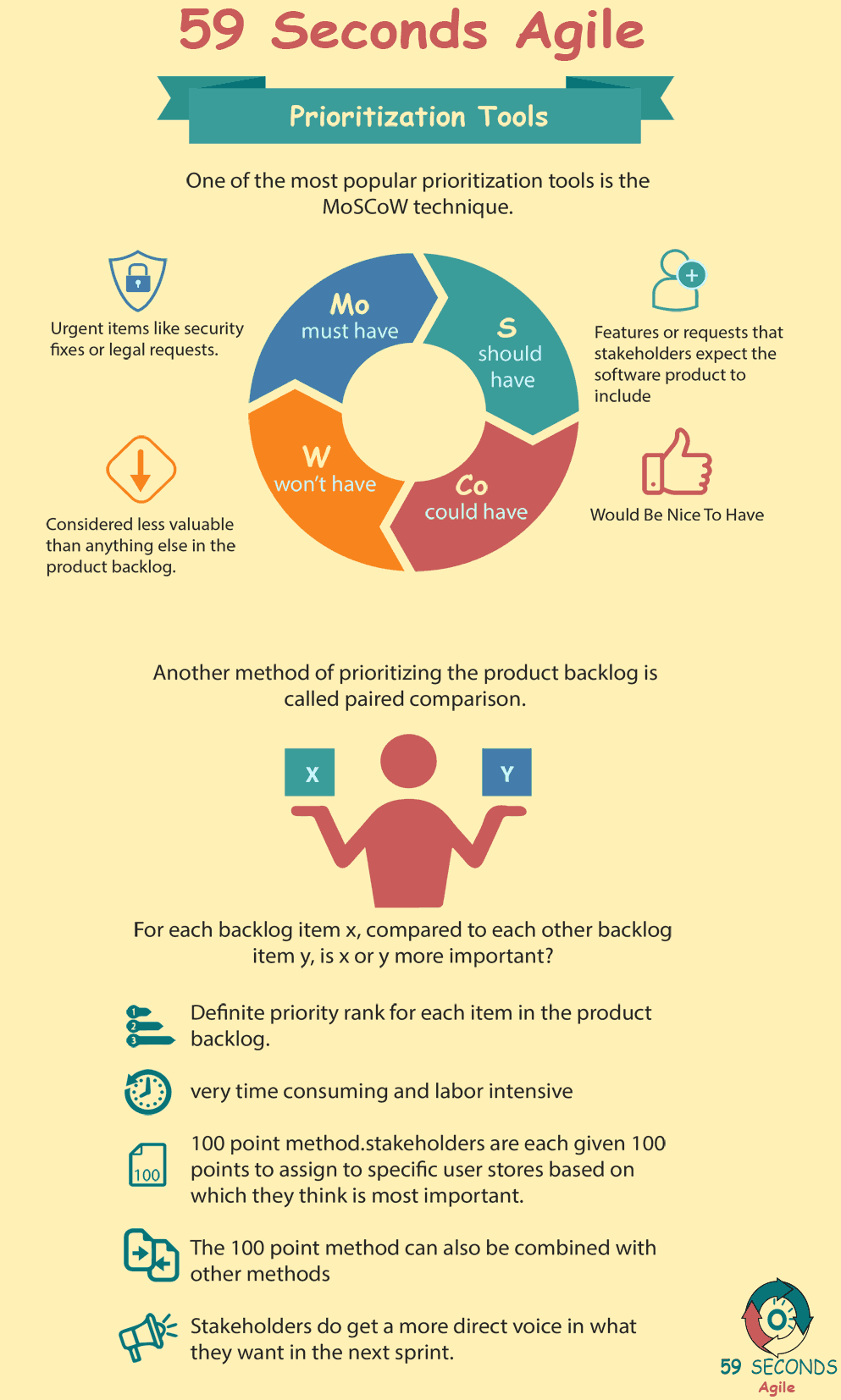Scrum Product Backlog Prioritisation
A 59 Seconds Agile Training Video
Continue to Part 7 Below
Prioritizing the Product Backlog
A 59 Seconds Agile Article
This article provides an ‘Introduction to Prioritizing the Product Backlog’ and looks to discuss what the Product Backlog is. It provides an overview of who is involved in the process of Prioritizing the Product Backlog.
Prioritizing the Product Backlog: Dependencies
The fourth and final aspect of features to consider when placing them in the product backlog is dependency. Dependency is whether or not a feature is necessary to the development of other features, or how many features it is directly connected to.
In your current traditional framework, there have been times when you’ve thought that you’re almost done with developing a large, complex feature, but then realized that its ability to work depended on a smaller, seemingly less significant feature.
Suddenly, development on the complex feature had to be put on hold while your team scrambled to complete the smaller feature so that the complex feature could work. This delay in development is avoided by using the product backlog to make sure that smaller, less important features, that have higher-priority items that are dependent on it aren’t overlooked.
You can also help track these dependencies with a network diagram. That way, you can see where all of your dependencies are and keep track of which features are completed. Developing these integral features closer to the beginning of the project will reduce interruptions to your team’s work later, and ultimately make more complex, high priority features easier to complete.
Planning and prioritization are the keys to unlocking maximum value.
Continue Reading —> Next
Prioritizing the Product Backlog
A 59 Seconds Agile Video Animation
Continue Reading —> Next
User Stories Applied
A 59 Seconds Agile Book Review
User Stories Applied by Mike Cohn is one of our favourite books on Agile User Stories. The book starts with an overview into user stories, and details what a user story is and the different aspects of them. He then discusses how to go about writing a user story, and provides details of the INVEST criteria that can be used to determine if the story is meeting all of its objectives. Next Mike gives an in depth discussion of who user stories are written for and where to begin when gathering the details for them. The book then discusses acceptance testing user stories, including how to go about specifying these criteria and the responsibilities of the development team and customers during this process.
Continue Reading —> Next
Prioritizing the Product Backlog
A 59 Seconds Agile Infographic

Continue Reading —> Next
Agile Scrum Master Training Course
Our Favourite Agile Books
We found these books great for finding out more information on Agile Scrum:
Continue Reading —> Next


